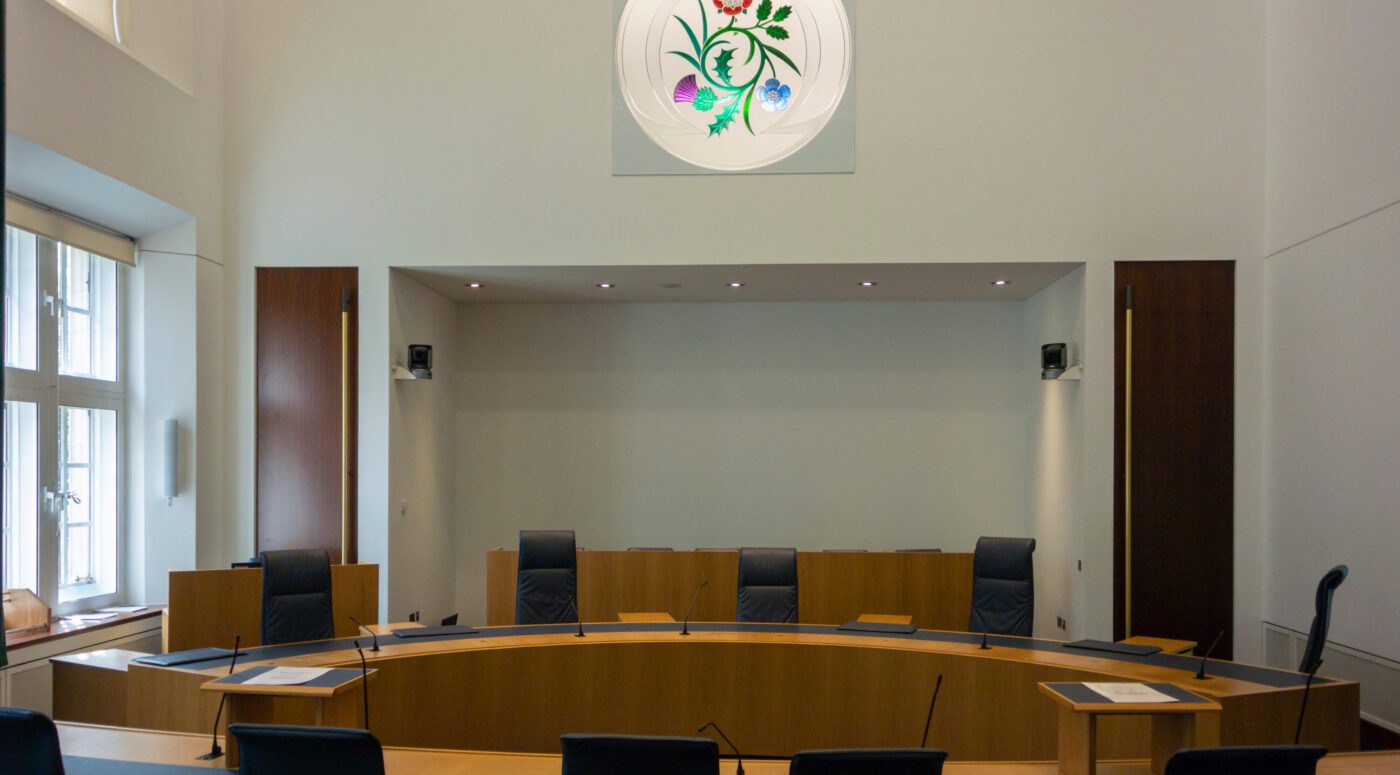

Constructive manslaughter is also known as unlawful act manslaughter. This is where you committed an act that resulted in the loss of life. You may not have intended to kill the person, but you must have intended to commit an unlawful act that the average reasonable person would have considered to be dangerous. Constructive manslaughter can occur in a wide variety of situations from dangerous driving, to health and safety breaches at work, to adolescent pranks gone seriously wrong. Whilst it is less serious than murder, manslaughter is one of the most grave offences that you can be prosecuted for in the English courts. It is also a relatively complex offence, which juries often struggle to grapple with. This can lead to a situation where juries are unable to return a verdict, such as in the second trial concerning the killing of Damilola Taylor. If you are in the dock for manslaughter, make sure that you have a robust criminal defence team that you can rely upon.
What are the different types of manslaughter?
There are two main categories of manslaughter: voluntary manslaughter and involuntary manslaughter. Within the category of involuntary manslaughter, there is gross negligence manslaughter and unlawful act manslaughter, which is also known as constructive manslaughter.
Voluntary manslaughter
Voluntary manslaughter occurs where the defendant killed the person, intending either to kill them or cause them grievous bodily harm. The defendant will probably have been charged with murder. However, the defendant has been able to rely upon a partial defence, such as loss of control, diminished responsibility, or killing following a suicide pact.
An example of voluntary manslaughter would be where a schizophrenic man experiencing a psychotic episode stabbed his neighbour to death, believing his neighbour to be the devil. The CPS might charge him with murder, but following a report from a psychiatrist confirming his medical condition, the charge would be changed to manslaughter. Alternatively, he could be prosecuted for murder, but the jury could return a verdict of manslaughter.
Involuntary manslaughter
There are two types of involuntary manslaughter, gross negligence manslaughter and constructive/unlawful act manslaughter.
- Gross negligence manslaughter
This type of manslaughter occurs in the context of a duty of care between the defendant and the victim. Duty of care is a concept that comes from civil law to explain certain legal relationships where one person is automatically taken to have assumed responsibility for another. Examples of relationships where a duty of care is implicit include school teacher/student, driving instructor/learner, doctor/patient, or if a parent offers to take care of one of their child’s friends for the day.
Gross negligence manslaughter involves a breach of this duty of care, which is found to have caused the victim’s death. The breach must be ‘gross’ which is taken by the courts to mean exceptionally bad conduct. For example, if an anaesthetist accidentally administered 100 times the prescribed dose of general anaesthetic, causing the patient’s death, that would cross the threshold of a gross breach.
- Unlawful act manslaughter (also known as constructive manslaughter)
This is where it is proved that the defendant intentionally committed an unlawful and dangerous act that caused the victim’s death. However, the defendant did not intend to cause the victim’s death. Some examples from real life cases are as follows:
- In 1883, a defendant was convicted of constructive manslaughter after he threw a box from a pier into the sea, killing a swimmer.
- In 1967, a man was found to have committed constructive manslaughter after he pointed a loaded gun at his friend for a joke. The gun was a revolver with bullets in two of the chambers. However, it was found by the court that he did not understand how the gun worked, so when he pulled the trigger he did not anticipate that his friend would be hurt or killed.
- In 1976, a defendant was convicted after he and his friend gave each other an injection of heroin, from which his friend died of an overdose. The friends had previously injected each other with heroin, but still the court found that this was nonetheless an unlawful and dangerous act.
How do you prove constructive manslaughter?
There are three key elements of constructive or unlawful act manslaughter. These are dangerousness, causation, and the legal elements of the unlawful act.
Dangerousness
In order to be convicted of constructive manslaughter, the court must find that the act that caused the death was dangerous. The question that the jury would be asked to consider is whether a sober and reasonable person would recognise that the act was dangerous. Dangerousness is defined as an act that exposes the victim to a risk of ‘some’ harm. The concept of ‘transferred malice’ means that an act can be dangerous even if it exposes a different person to a risk of harm than the person who died.
Causation
The prosecution must show that the unlawful act caused the victim’s death. There must not be an intervening act that would break the chain of causation. Say, for example, the unlawful act was obstruction of the public highway. A protester stood in the road carrying a placard and, because of this a car, swerved and crashed killing the passenger but not the driver. However, it subsequently transpired that the driver was drunk at the time. A prosecution against the protester for manslaughter may fall down on causation, as their defence team could argue that the drunkenness of the driver was an intervening act, which broke the chain of causation.
Unlawful Act
In addition to proving that the act that the defendant committed was dangerous, the prosecution would need to show that it was unlawful, and that the legal elements for the offence that made it unlawful were made out. For example, if the offence that was committed was arson, under Section 1(3) of the Criminal Damage Act 1971, the prosecution would need to prove that the defendant had without lawful excuse destroyed or damaged property by fire. It is possible that the defendant would have committed aggravated arson i.e. arson with intent to endanger life. However, it would not be necessary to prove the aggravated arson offence in order to secure a conviction for manslaughter. It would only be necessary to show that the defendant committed arson, and that the act was dangerous.
What is the sentence for constructive manslaughter?
You may be wondering about the kind of sentence you could face for constructive (unlawful act) manslaughter. The maximum sentence is a life sentence, however in some circumstances, your sentence could be much lighter. The Sentencing Council provides detailed guidance on sentencing for different offences. It explains that for manslaughter the sentence range varies between one to 24 years’ custody.
The deciding factor for sentencing in manslaughter is the culpability of the defendant. This means the extent to which the defendant should be held to blame for what has happened. Factors that indicate high culpability include:
- where the defendant almost but not quite had the mens rea (guilty mind) requirement for murder i.e. the defendant intended to cause harm, however the harm just falls short of the definition of grievous bodily harm. This might occur in the context of a battery, where it cannot be proven that the defendant intended to seriously harm the victim.
- where the defendant’s conduct carried a high risk of death or grievous bodily harm of which the defendant was, or should have been aware.
- where the death occurred in the course of escaping from a serious offence in which the defendant played a more than minor role.
- if the defendant concealed, destroyed, defiled, or dismembered the victim’s body after the death.
Low culpability could include cases where the offender played a minor role, or where their responsibility was substantially reduced by mental disorder, learning disability, or lack of maturity.
Usually, the judge will also consider the harm caused when sentencing. However, for manslaughter cases, the harm caused, i.e. a death, is always of the utmost seriousness. Therefore culpability alone will determine the starting point for the sentence. From there, the sentence can be adjusted to take into account aggravating or mitigating circumstances.
Aggravating factors include previous convictions for similar cases, the fact that the offence was committed on bail, or an offence that was motivated by hostility on the basis of a protected characteristic such as race, religion, or disability.
Meanwhile, previous good character, the show of remorse, or an early guilty plea could reduce the sentence. The personal circumstances of the defendant – such as if they are the sole carer for dependent relatives – could also serve as a mitigating factor.
Where to get further help
Manslaughter is a very serious offence. If you or a loved one is facing trial for manslaughter, make sure you have the best possible legal team on your side. At Stuart Miller Solicitors, our criminal defence solicitors will give you experienced and realistic advice and top quality representation. Do not hesitate, call us for a no-obligation consultation today.

